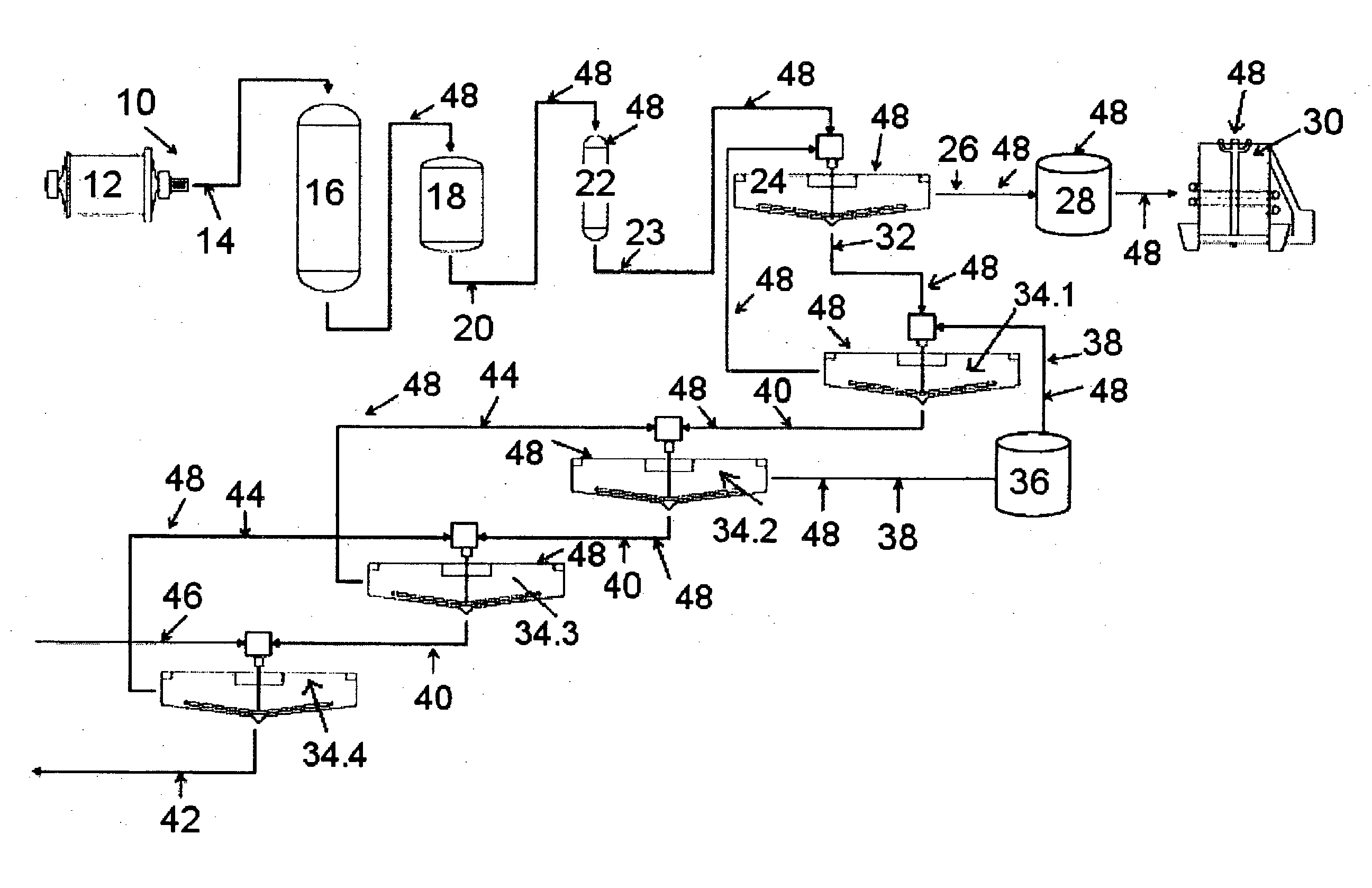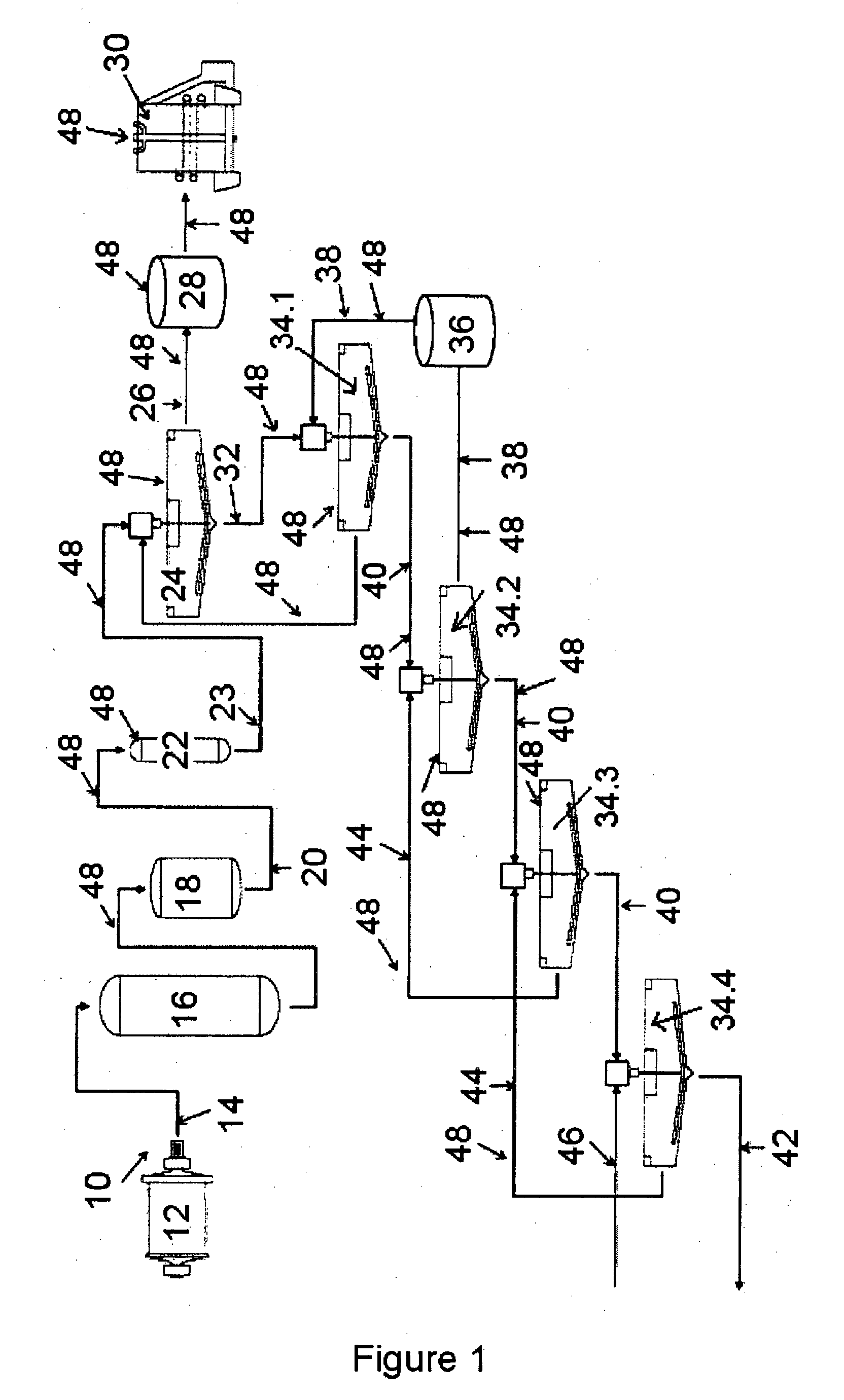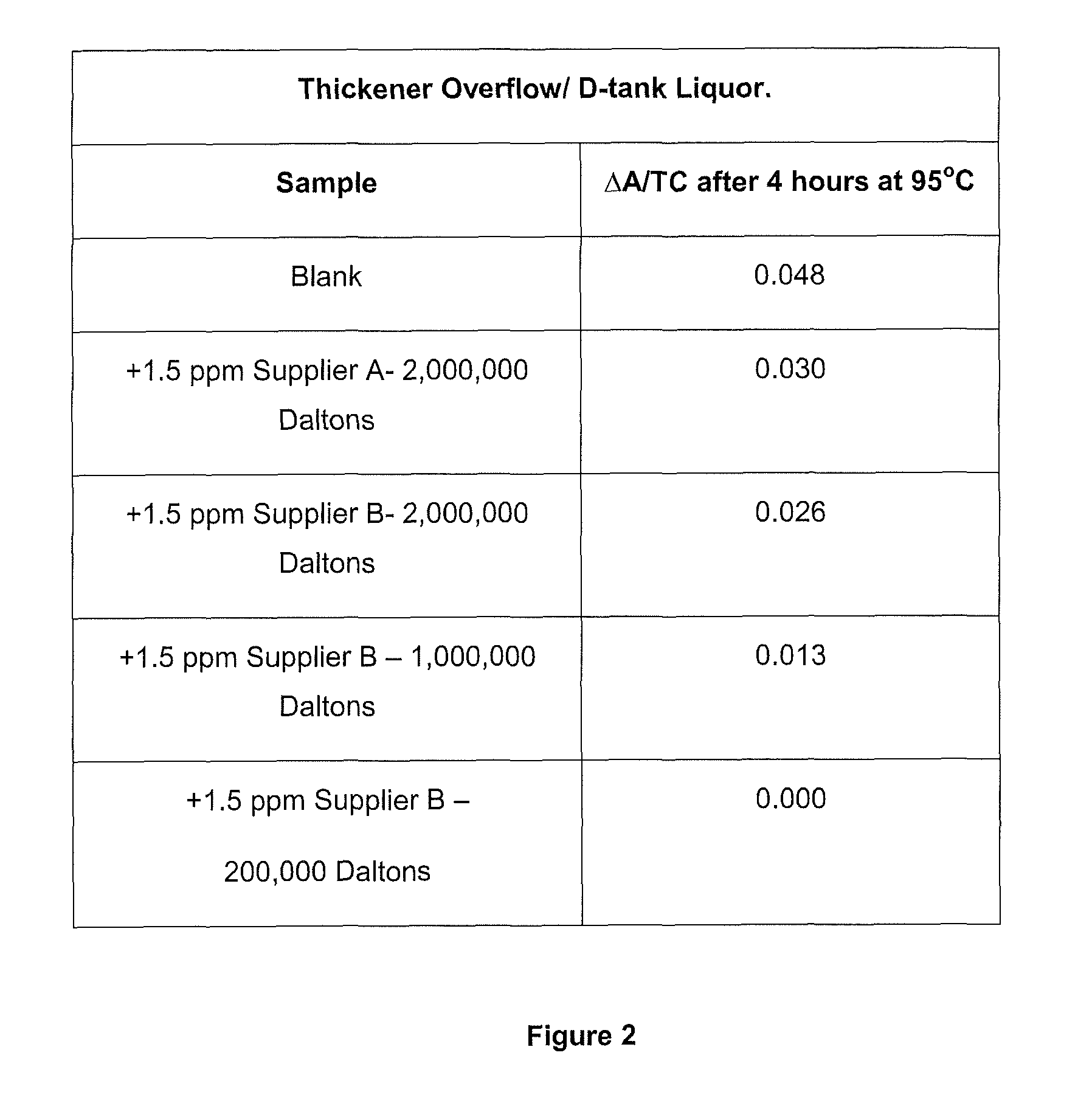Method of increasing the stability of a bayer process liquor
a technology of bayer process and stability, applied in the direction of chemistry apparatus and processes, water/sludge/sewage treatment, aluminum compounds, etc., can solve the problems of reducing the time for which filters, tanks and pipes remain operable, affecting the cost of operation and alumina and soda recovery, and reducing efficiency. , to achieve the effect of increasing liquor stability and increasing liquor stability
- Summary
- Abstract
- Description
- Claims
- Application Information
AI Technical Summary
Benefits of technology
Problems solved by technology
Method used
Image
Examples
example 1
[0065]FIG. 2 provides a table showing the clear difference between high (>500,000 Daltons), and low (<500,000 Daltons) molecular weight dextran from two different production sources for liquor stability application to thickener overflow or D-Tank liquor. The lower molecular weight dextran is an improved liquor stabiliser in comparison to existing higher molecular weight products which have been disclosed (Kildea et al, “Scale Control and Prevention of Hydrate Precipitation in Red Mud Filters”, Light Metals, 2000, 105-110).
example 2
[0066]FIG. 3 shows the difference between high (>500,000 Daltons), and low (<500,000 Daltons) molecular weight dextran with gibbsite present at 0.8 gpl to demonstrate the differentiation between nucleation and growth of gibbsite in pregnant (also known as supersaturated or green) liquor which would apply to any liquors from blow off to post filtration. Those skilled in the art will know that the degree of supersaturation and therefore rate of nucleation and growth of gibbsite will vary throughout the Bayer process based on liquor concentrations and temperature. In this example the low molecular weight dextran not only prevents nucleation, but also growth unlike the higher molecular weight dextrans (as shown in FIG. 2).
example 3
[0067]FIG. 4 shows the dose effectiveness of low molecular weight dextran in stabilising liquor for washer applications where liquors are more dilute and at lower temperatures than upstream applications like blow off, thickeners, D-tanks and filters. It is clearly demonstrated that washer overflow (WOF) to which 0.75 ppm dextran of less than 500,000 Daltons is added is more stable than WOF without dextran. Whilst with 1.5 ppm of the same dextran added the WOF is still more stable.
PUM
| Property | Measurement | Unit |
|---|---|---|
| Temperature | aaaaa | aaaaa |
| Temperature | aaaaa | aaaaa |
| Fraction | aaaaa | aaaaa |
Abstract
Description
Claims
Application Information
 Login to View More
Login to View More - R&D
- Intellectual Property
- Life Sciences
- Materials
- Tech Scout
- Unparalleled Data Quality
- Higher Quality Content
- 60% Fewer Hallucinations
Browse by: Latest US Patents, China's latest patents, Technical Efficacy Thesaurus, Application Domain, Technology Topic, Popular Technical Reports.
© 2025 PatSnap. All rights reserved.Legal|Privacy policy|Modern Slavery Act Transparency Statement|Sitemap|About US| Contact US: help@patsnap.com



